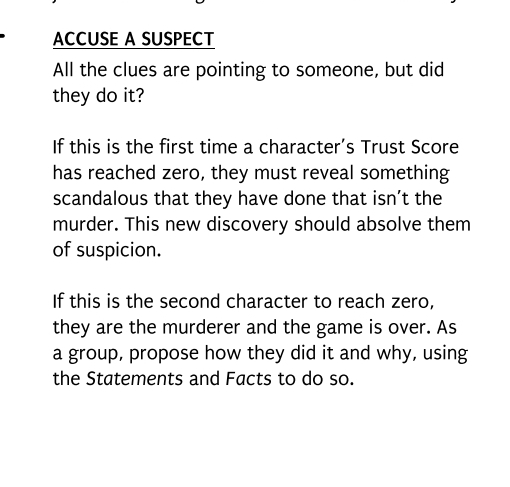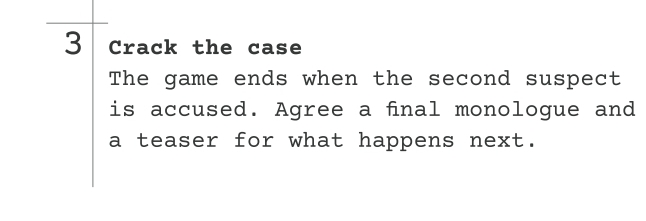As I mentioned elsewhere, these rules confused the heck out of me until I read the 1e rules.
Consider this rule from 1e:

Very clear. Then this from 2e:

Without the context from 1e, this made absolutely no sense. Why would the game require you to accuse two suspects? What happens when you accuse the first one?
Eventually this is sort of covered in 2e... In this weirdly terse rule.

Like, it was completely unclear to me that checking if I'm done meant "Is this the second suspect?" until I read the superior 1e phrasing of the rule.
Other issues include collapsing "rumors" and "statements" into "leads" in a way that makes it completely unclear how they work. It doesn't help that the example on p. 6 of 2e doesn't explain whether all of the example is one Investigator turn, two, or three. (The 1e "move" phrasing makes this much clearer.)
Really, in a lot of ways the 2e rules read less like a second edition and more like a quick reference for the first edition... except it's longer despite being more terse and less clear.
And the longer, less clear version costs $4.
I wish I understood the choices here. I acually like this game, now that I've read the 1e rules! Reminds me of Brindlewood Bay.

